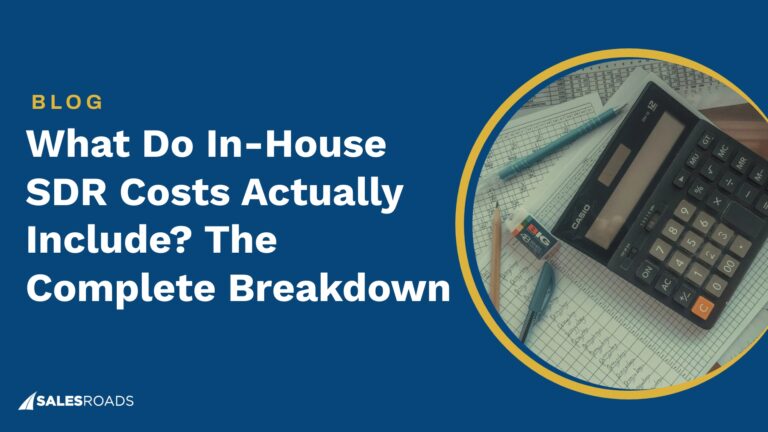Identifying buying signals is one of the most important skills in sales, yet many sales teams still overlook them. Whether you’re communicating through email, phone calls, or demos, recognizing when a prospect is ready to move forward can make all the difference.
Early signals can help you tailor your approach, close deals faster, and build stronger relationships. But with so many distractions in the sales process, it’s easy to miss these cues.
What Are Buying Signals in Sales?
Buying signals are behaviors or actions that suggest a prospect is interested in making a purchase. They can be verbal cues during a conversation or actions such as website visits and content downloads. The better you are at identifying these buying signals, the more effectively you can tailor your approach to increase your chances of closing the deal.
For example, a prospect who spends time on your product pages or downloads whitepapers might be showing early interest. They may not be ready to engage directly, but these actions are still valuable signals that indicate interest.
How Buying Signals Influence Closing Rates
Buying signals are indicators that a prospect is ready to make a purchase. By identifying these signals early, you can engage with prospects at the perfect moment, which can significantly boost your closing rates.
Failing to spot buying signals or responding too late can lead to missed opportunities. Timing is everything—when you respond to signals at the right time, you increase your chances of success.
Here’s a crucial statistic: Half of B2B buyers make up their minds before talking to sales reps.
This means many purchasing decisions are made without engaging with a sales team, which highlights the importance of identifying early buying signals. As buyer behavior continues to evolve, more decisions happen before a conversation even starts. Salespeople must be proactive in spotting these signals to stay ahead.
Common Types of Buying Signals in Sales
Recognizing these signals is more than just noticing when a prospect says something positive about your product. It’s about understanding all the cues—both obvious and subtle—that indicate they’re moving closer to a decision.
In this section, we’ll explore the different types of buying signals in sales, helping you become more attuned to your prospects’ behaviors.
Verbal Signals: Direct Indicators of Interest
Verbal buying signals are the most straightforward clues that a prospect is interested in making a purchase. These signals come through conversations and provide clear insight into the prospect’s level of intent.
Common verbal buying signals include:
- Questions about pricing or terms: When a prospect asks, “How much does this cost?” or “What are the payment options?” it’s a direct sign that they are evaluating the financial aspects of your product or service.
- Requests for a demo or trial: If a prospect asks, “Can I see a demo of how this works?” they are showing strong interest in understanding how your solution can solve their specific problem.
- Mentioning implementation or next steps: When a prospect starts asking, “How long does the implementation take?” or “What’s the onboarding process?” they’re thinking about how they would integrate your solution into their business.
These verbal signals require a quick response. As soon as you recognize them, it’s time to engage with the prospect on a deeper level, addressing their specific questions and moving them toward closing.
Non-Verbal Signals: Subtle Clues to Prospect Engagement
Non-verbal buying signals can be harder to detect but are often just as telling. These signals rely on body language, tone, and general demeanor to indicate interest.
Some examples include:
- Positive body language: Nodding during a presentation, maintaining eye contact, or leaning forward are all signs that the prospect is engaged and interested.
- Tone of voice: A shift to a more upbeat or inquisitive tone during the conversation is often a subtle cue that the prospect is warming up to your pitch.
- Focus and attention: If the prospect is actively taking notes or seems particularly focused on your presentation, it’s a strong sign that they’re absorbing information and considering how it applies to their needs.
While these signals are more indirect than verbal cues, they can provide a great deal of insight into the prospect’s mindset. When you notice positive non-verbal signals, it’s a good time to explore their needs further and start guiding them toward the next stage of the buying journey.
Digital Signals: Tracking Online Behavior for Insights
In today’s world, many buying signals are communicated online through a prospect’s behavior on your website, emails, and other digital content. These digital signals are crucial for identifying interested prospects before they reach out directly.
Common digital buying signals include:
- Repeated visits to key pages: If a prospect visits your product or pricing pages multiple times, it’s a clear sign they are interested in learning more about what you offer.
- Engagement with content: Downloading whitepapers, attending webinars, or clicking on links within emails are all strong indicators that a prospect is looking for more information and evaluating potential solutions.
- Abandoned forms: While not always intentional, abandoned forms often suggest that a prospect is considering a quote request but needs additional information or a nudge to take the next step.
Tracking these digital signals is essential for identifying prospects who are actively researching your solution. When you notice these behaviors, reach out to offer further assistance or provide additional content that can help them make their decision.
Buying Signals in Emails, Calls, Demos, and Social Platforms
Recognizing buying signals early can make a significant difference in how you approach prospects, allowing you to tailor your communication and increase your chances of closing deals. They can appear in various forms such as emails, calls, demos, and even on social platforms.
Email Responses That Signal Interest
Emails are a common touchpoint for sales interactions, and how a prospect responds can reveal their level of interest. Certain email responses can serve as buying signals, helping you understand whether a prospect is moving closer to a decision.
Here are a few common email buying signals to look for:
- Prompt replies: If a prospect responds quickly to your email, especially with thoughtful answers or further questions, they are likely engaged and interested.
- Requests for more details: When a prospect asks for more information—like pricing, product features, or case studies—they are showing a clear interest in moving forward.
- Positive or open-ended responses: Phrases like “This sounds promising,” or “Let’s schedule a meeting to discuss next steps” indicate interest in continuing the conversation and taking the process further.
- Engagement with calls to action: If a prospect clicks on links in your emails, such as scheduling a demo or downloading additional resources, it signals that they are evaluating your product more closely.
Tracking these email responses helps you identify when it’s time to reach out and deepen the conversation. These are clear signs that the prospect is considering a purchase.
Call Behaviours That Reveal Buying Intent
Cold calling is another critical part of the sales process, and it often offers valuable insights into a prospect’s intentions.
Some phone call behaviors can indicate strong buying signals, including:
- Asking specific questions: When a prospect asks about product features, service plans, or technical specifications, they are likely trying to determine if your solution fits their needs. This is a strong indicator of interest.
- Requesting a timeline: A prospect asking, “When could we implement this?” or “How soon could we see results?” is signaling that they are seriously considering your solution and want to understand how quickly they can benefit from it.
- Negotiation or discussing pricing: When a prospect starts discussing budget, terms, or discounts, it’s a clear buying signal. They are moving from the “information-gathering” stage to the “decision-making” phase.
- Expressing urgency: Statements like, “We need this solution ASAP” or “Can we make this happen by next month?” suggest a high level of interest and urgency, signaling that they are close to making a purchase decision.
During calls, look for these behaviors as they indicate that the prospect is actively moving through the buying process.
Demo Questions That Show Readiness to Proceed
Sales demos are one of the most effective ways to showcase your product, and they often reveal key buying signals. If a prospect is asking the right questions during a demo, it’s a strong indicator of their readiness to move forward.
Some buying signals during a demo include:
- Asking about scalability: Questions like “How easily can this scale as our business grows?” show that the prospect is considering how your solution will fit into their long-term plans.
- Discussing implementation: If a prospect starts asking about implementation, such as “What’s the onboarding process like?” or “How long does it take to get up and running?” it shows they are seriously thinking about how they would incorporate your product into their workflow.
- Requesting access to a trial or more detailed demonstration: When a prospect asks for a trial version or to see more advanced features, they are signaling a readiness to evaluate your solution in a real-world context.
- Confirming fit with business needs: If the prospect says, “This solves exactly what we need,” or “We’ve been looking for something like this,” it’s a clear buying signal that they are seeing value in your product.
Pay attention to these types of questions during demos, as they highlight a prospect’s readiness to move forward.
Signals from Social Platforms: LinkedIn and Beyond
Platforms like LinkedIn, Twitter, and other professional networks have become valuable sources for identifying buying signals. Many prospects engage with content and interact with brands through these channels, and their actions can reveal critical buying signals.
Here’s how to spot buying signals on social platforms:
- Engagement with your content: When a prospect likes, comments, or shares your posts, this shows an interest in your brand and the topics you discuss. It’s a sign they are actively considering your product or service.
- Profile visits and connection requests: If a prospect visits your LinkedIn profile or connects with you after engaging with your content, it’s a buying signal that they are taking a closer look at you or your company.
- Comments on industry-related topics: If a prospect is commenting on industry trends, challenges, or solutions that align with what you offer, this indicates they may be interested in how your product fits into their business.
- Following up after content engagement: When a prospect reaches out to you via message or asks to connect after engaging with your content, they’re signaling that they want to learn more or discuss further.
Social platforms offer a wealth of data that can help salespeople understand a prospect’s level of interest. Monitoring these interactions is a great way to spot early signals of buying intent.
Bottom Line
Whether it’s through the conversations you have over email, calls, or social media, spotting the right cues at the right time can significantly impact your sales outcomes.
The key is being attentive, asking the right questions, and staying engaged at every stage of the buying journey. When you understand how to identify buying signals early, you can respond faster and more effectively, building trust and moving prospects closer to a decision.











